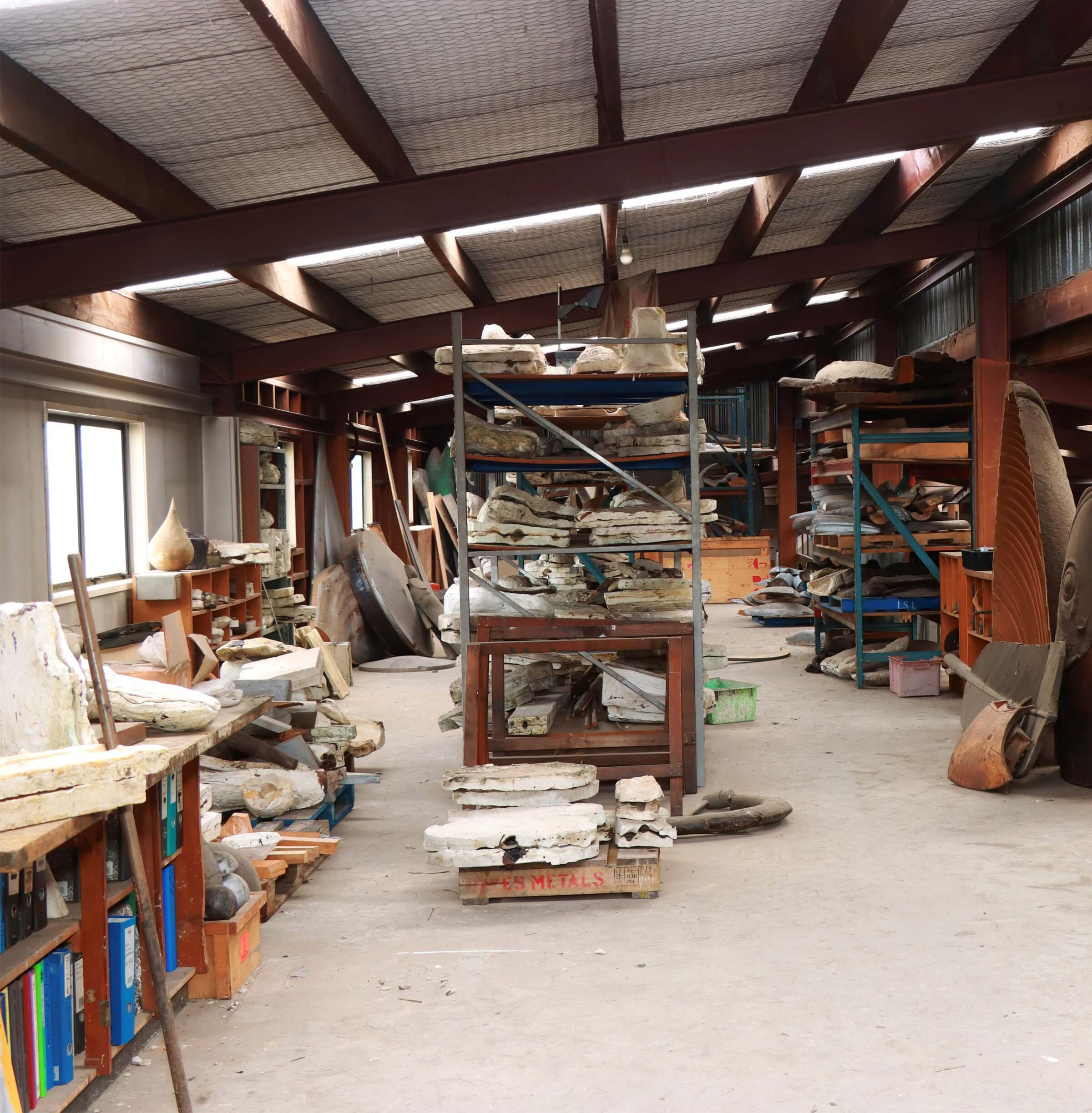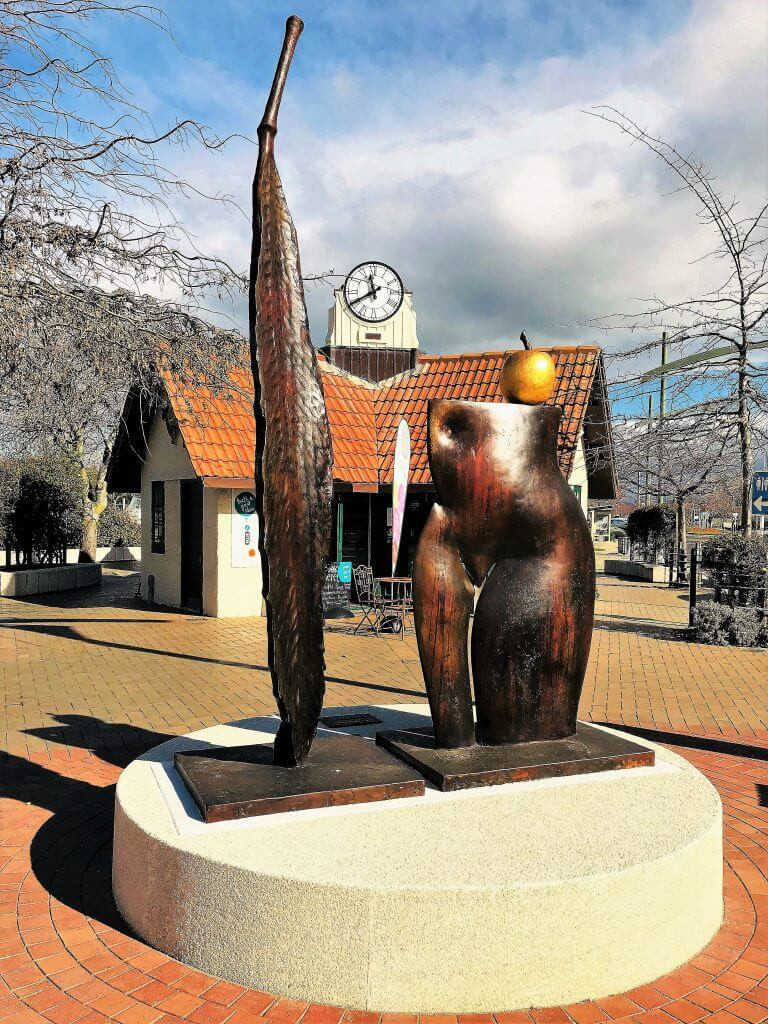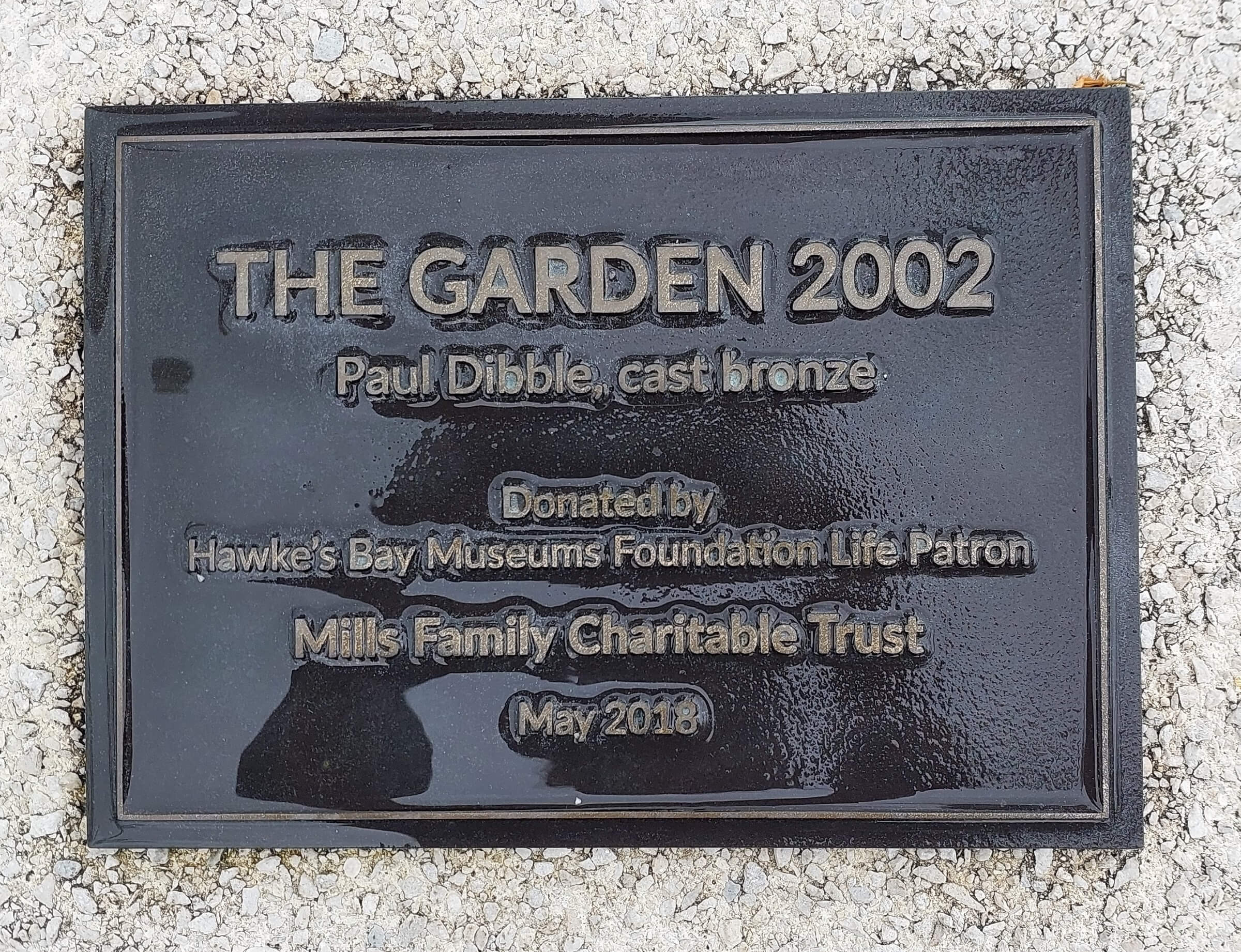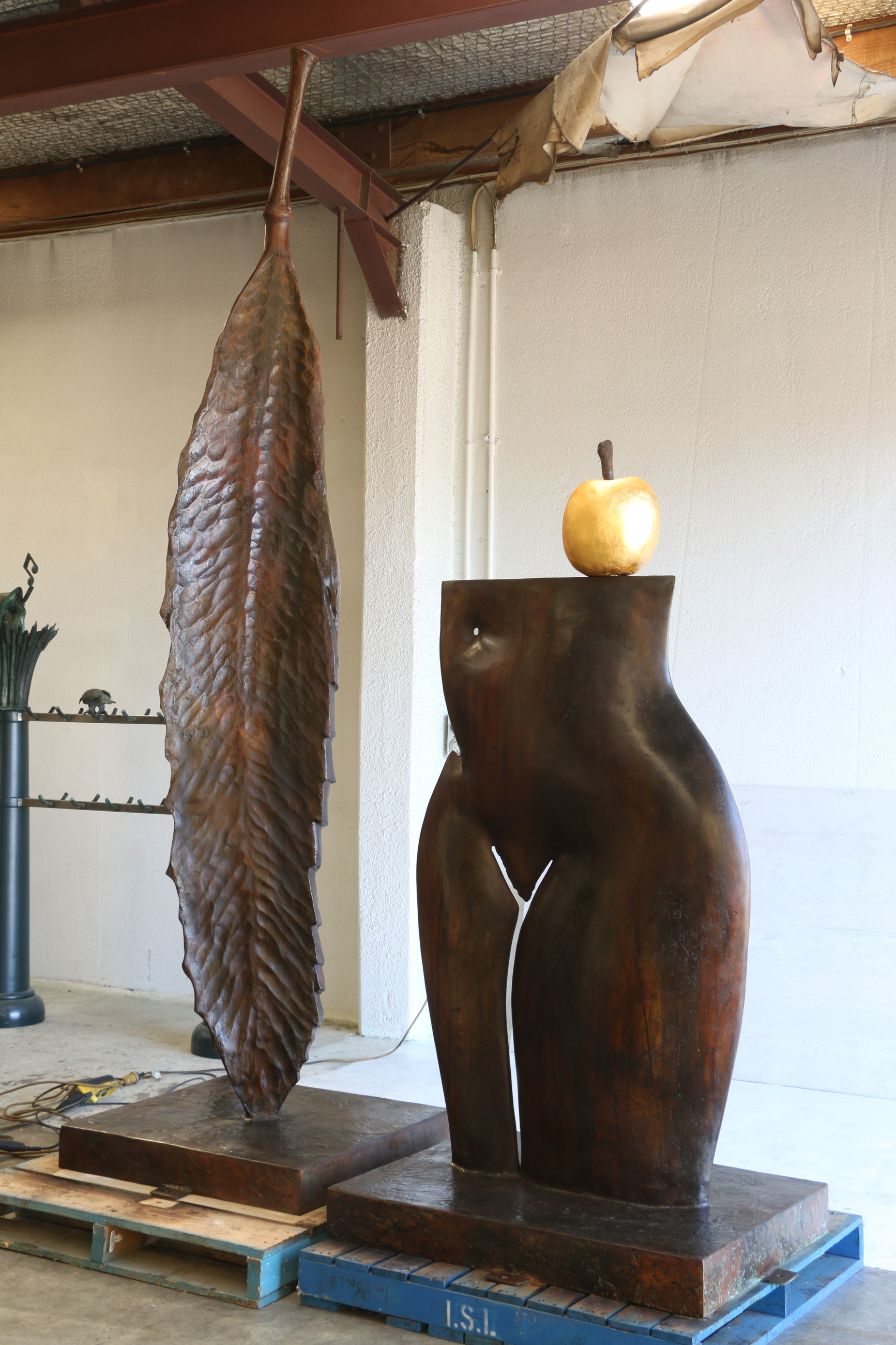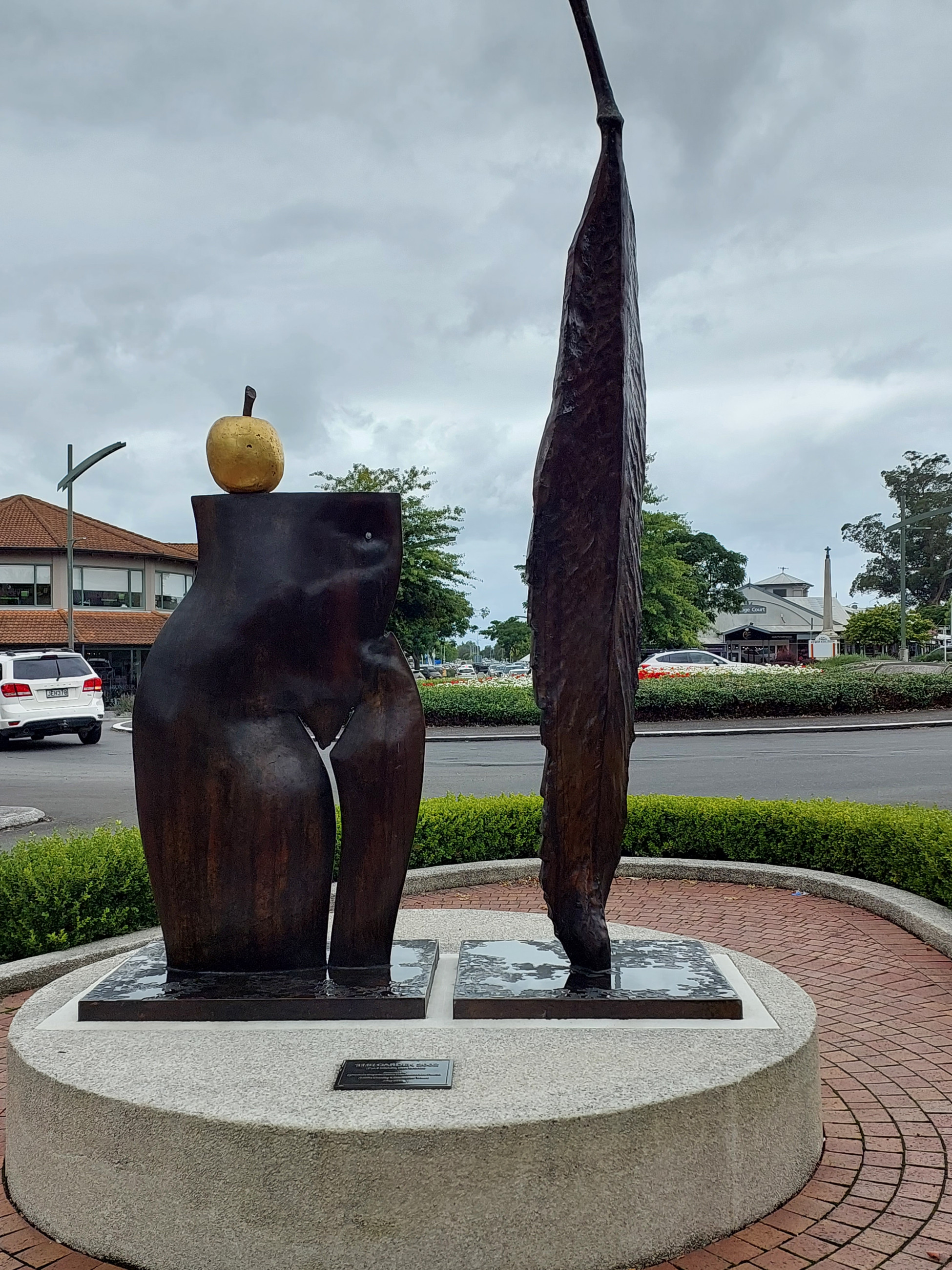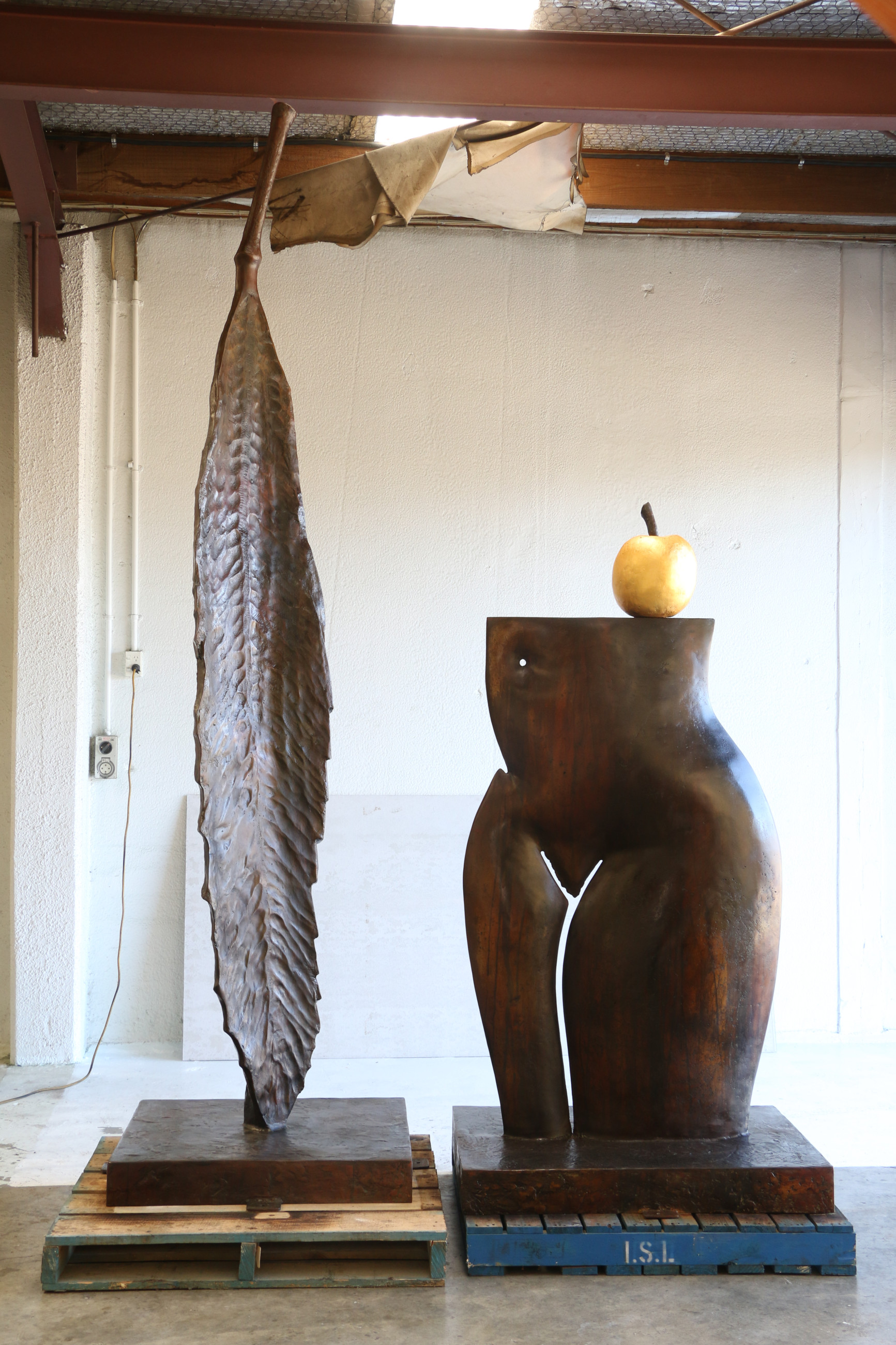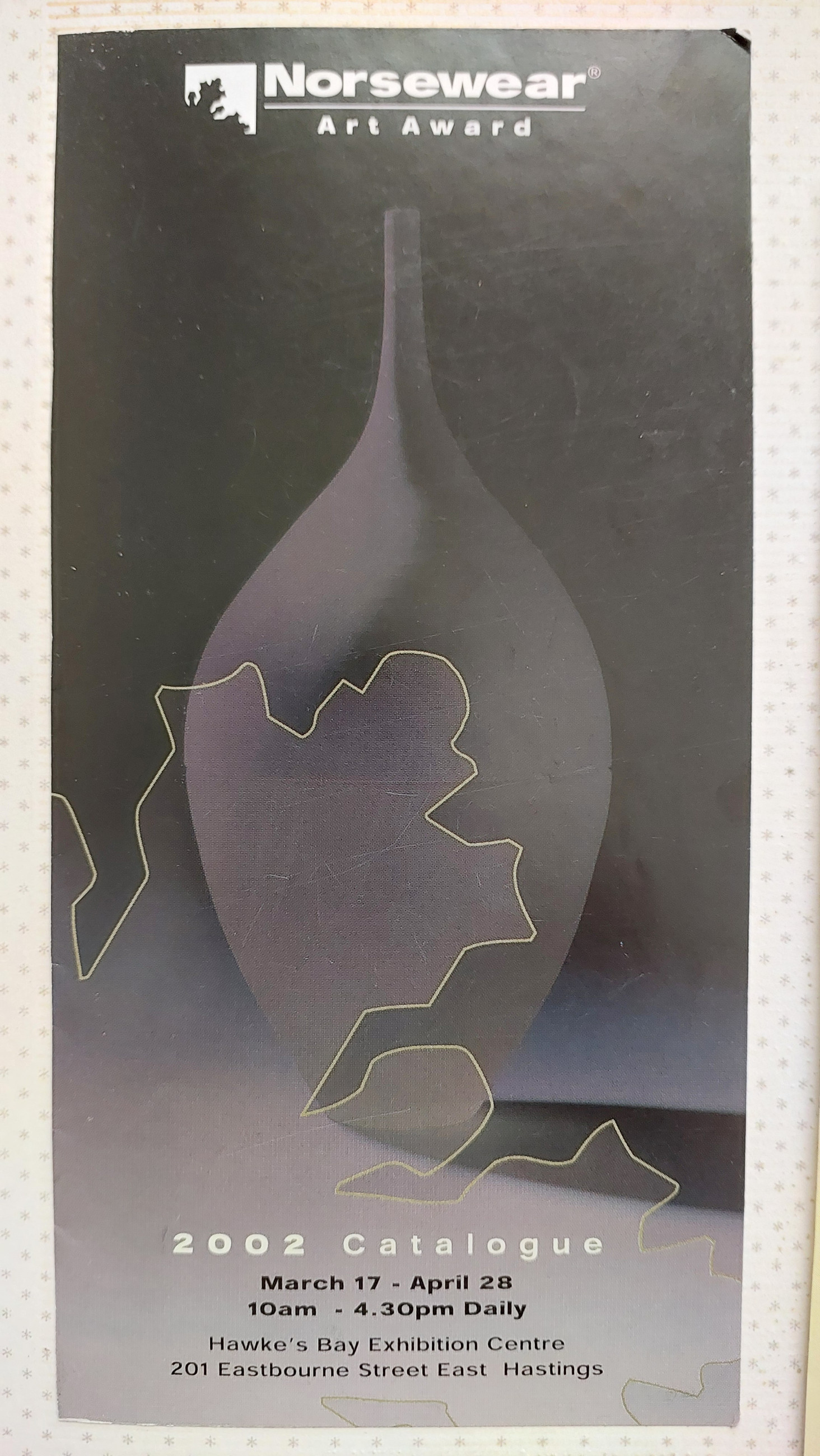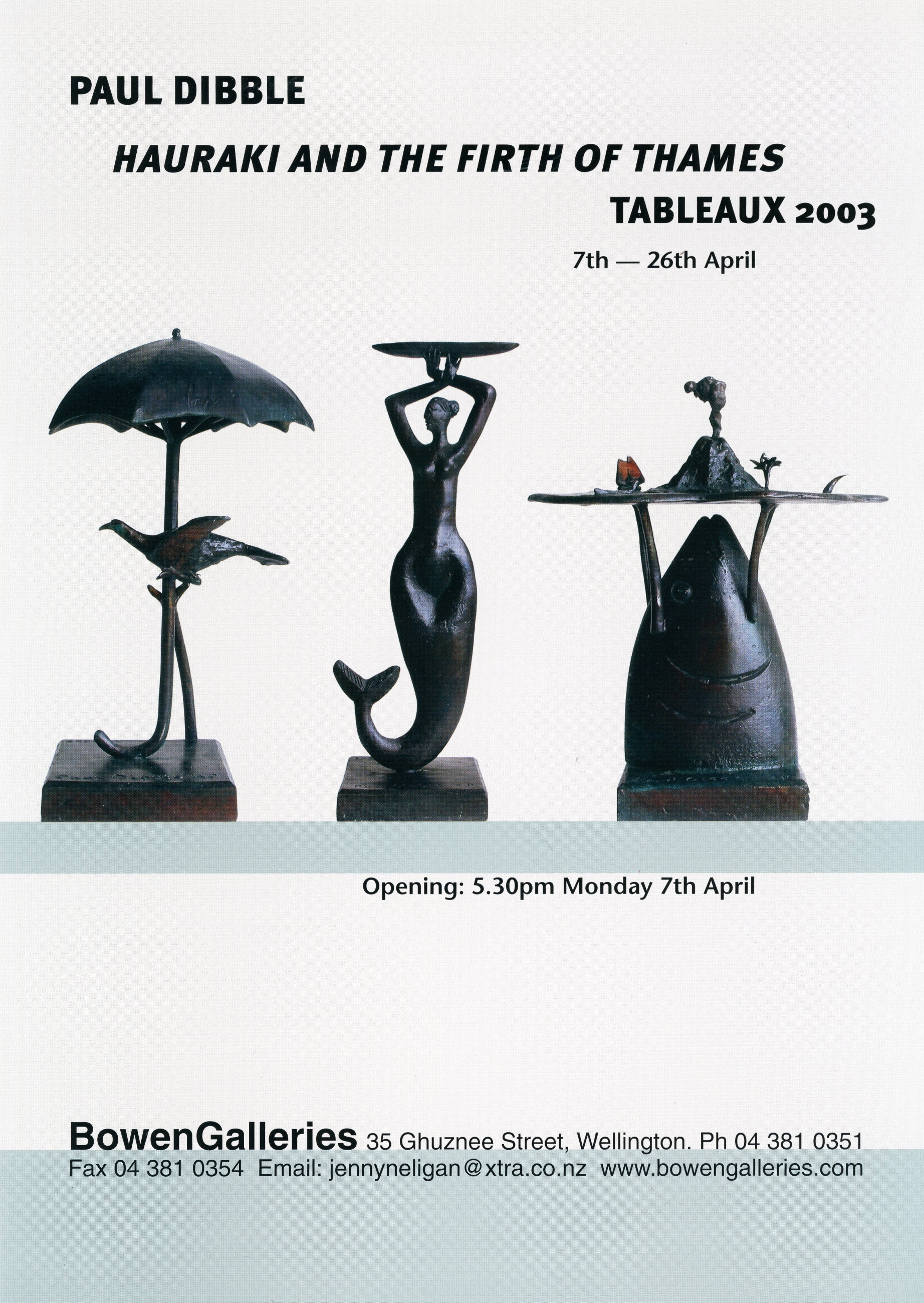2002 The Garden (2002)
2002 The Garden (2002)Bronze, Gold 24 carat
3300 x 2100 x 850 mm
2002
Single edition + AP
Notes
Despite its feeling of restfulness, The Garden has faced significant amounts of hostility. The work was made in 2002 on the heels of its companion piece Fruits of the Garden, 2001 which was purchased and installed at Frank Kitts Park on the Wellington waterfront.
It was first shown in Hawkes’ Bay in Hastings when Paul was guest artist supporting the Norsewear Art Awards in 2002, a role he was happy to fulfill to help publicize the new art exhibition and competition. From there it travelled to a scheduled exhibition at the Bowen Gallery in Wellington, displayed outside the gallery as it was too high to fit into the space. It is a sizeable work, and at that point, and even now, an achievement for the studio to make. This work sold from the exhibition and took up residence at a large property in Martinborough. But Paul was so taken with the work that he made an edition to keep, an artist’s proof that he intended to one day display in his own garden.
The sculpture, as assumed, is titled after the biblical garden, a reference to New Zealand as an antipodean paradise. This wasn’t a new theme, visited in works dating from the mid ‘80s and part of a philosophy of the view of New Zealand as a sacred and blessed land, where Paul had grown up and lived all his life and loved – “God’s own” as the saying went.
The scene is of a female torso, a relocated British antiquity, juxtaposed by a leaf falling, just landing to balance upright. The movement of the leaf suggests the passing of time both with its movement and as emblem of the seasons. But more than narrative, as shapes they aesthetically relate in the soft swells and curves subtly nodding to each other to create an atmosphere of stillness and tranquility.
From the front the sculpture’s forms appear monumental with full solid shapes. But from the side the viewer discovers it as actually being semi-relief with thin, delicate edges lending towards abstraction. Thus, the classical elements of the European notions of sculpture are mixed with a suggestion of the South Pacific, seen in the almost two-dimensional quality of canoe prows or sculpture. Atop is the notorious apple, as if placed on a table, modeled completely in the round, teasing the onlooker.
In both exhibitions the work was well accepted and without issue. By 2015 when Paul’s own Collection of his work had begun to grow and choices had to be made about which sizeable work to retain, he decided it could be sold. For a few years it stood outside the Page Blackie Gallery in Wellington, the size of the work acknowledging the gallery, but not well displayed due to the tight enclosure of the gallery entrance passageway. It was brought back to the studio and relishing its return, in 2017, Paul adapted it by gilding the apple it now to shine as a tantalizing enticement.
After this alteration it stayed local, sited across the road from the privately owned Zimmerman Art Gallery, timed during a week of arts events on in the city. And this is when the strike of ill luck began. The Council had overbooked the courtyard where the sculpture was to go, prior approval having been sought before moving it into place, this confusion not discovered until it arrived on site. It may be that this was a miscommunication or over enthusiasm of a wall artist who continued onto what they assumed was a free wall space, but it was an impossible situation to leave as it was. The sculpture looked hopelessly out of place with such a mural beside it. This left a quandary to resolve. Painting over the mural seemed a terrible option, so in the end the decision was made to instead cover the mural with a temporary painted board fixed to the wall with an agreement with the council that the sculpture would be moved on in a few months and the temporary board then removed. This solution was never properly explained publicly and what followed was a torrent of vitriol. Perhaps the presence of gold, as expensive a medium as you could find further upset what was presumed to be a put down of more community-based art practice. One critic made the comment that the sculptor was seeking to “culturally cleanse” other artist’s works.
Less than two weeks later the sculpture was removed, not just to quell controversy but as it was purchased by a Havelock North group, using funds from the MTG and the Mills Family Trust to establish it in the middle of the village, siting it outside the Information Centre around the central roundabout. This seemed a good resolution. It was unveiled in a formal ceremony by the Governor General on May 5, 2018. It had returned (nearly) from where it had originally first been shown some 16 years previously. Hawkes’ Bay, as a fruit bowl for the country, and its beauty for tourism was a place that could easily be thought of as a Garden of Eden.
But another fevered torrent was unleashed even worse than the previous. Some people were upset by the nudity, even in this most abstract form. Opinions included comments that it summed up notions of colonialism, male entitlement, the destruction of the land from industrial farming, contamination of waterways, reducing women to childbearing objects for men to exploit, and male fantasies of domination. Not only were these suggestions published in the Hawkes’ Bay news but also in articles extending to the Auckland Herald. Paul and the studio were bewildered by the response as was the organizing committee who had purchased the sculpture.
It is interesting the way time and place can alter perception, and as much as art attempts to be timeless, the audience is firmly part of a time. In 2002 the statement was a simple one – a reverence of New Zealand as a beautiful land akin to paradise. But in 2018, on the back of the MeToo movement, environmental concerns and gender identity issues very different interpretations were applied.
